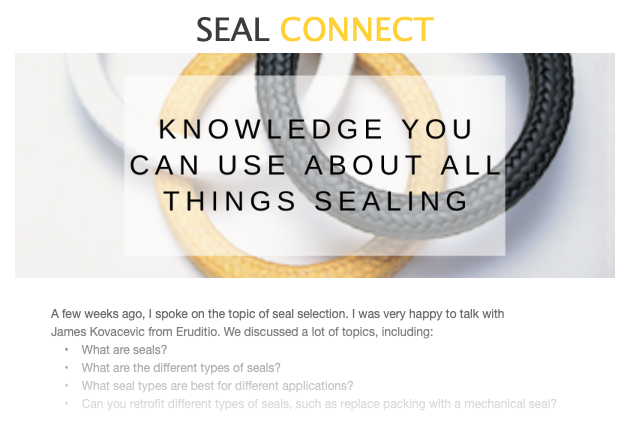Effective sealing technology makes for a safer food and beverage industry
Successful product containment and protection only occurs if the ideal sealing technology is chosen. Otherwise, equipment downtime, product waste and housekeeping/slip risks will be some of the problems encountered.
A recent article in Processing Magazine recently discussed sealing rotating assets and other equipment in the food and beverage industry. It detailed why special consideration is required, specifically for sanitation needs.
Why Food and Beverage Applications Require Safe and Effective Sealing
Sanitation is a top requirement for the food and beverage industry. However, safety and housekeeping issues can be difficult to prevent when sealing equipment. Risks arise when process fluid leaks from a pump, valve, mixer, blender, agitator, evaporator, hot oil system, or lubrication system, including the following:
- Downtime to replace/maintain equipment
- Bacteria growth on assets that leak
- Product loss and associated costs
- Slip risks from product leaking on the floor
Installing seal technology that properly fits the process and provides safety for personnel and equipment is critical.
Packing Needs in Food and Beverage Processes
Compression packing is one of the oldest, most common, and most trusted technologies. It involves a gland along the top packing ring that is tightened, and the packing is compressed into the stuffing box. Packing is constructed of relatively soft materials that are inserted as cut rings between the rotating member and the body of the pump casing, valve or other asset. The tightened gland against the outboard ring transmits pressure evenly to the entire packing set if installed correctly. This pressure expands the rings radially, creating a seal.
When selecting packing for pumps and valves, polytetrafluoroethylene (PTFE) is an ideal choice. It is resistant to high temperatures, and the fibers are FDA compliant. PTFE packing is white, which prevents any color transfer to the product. The lubricant added to the packing rings must also be FDA compliant and avoid color transfer in color-sensitive applications.
Other Sealing Options for Food and Beverage Industry
Mechanical seals are an ideal selection when a process cannot leak. The solids content of the process should be removable with an external flush system. This technology consists of two flat faces — one rotating and one stationary. It must be FDA-compliant in these applications.
Air seals, which are a type of mechanical seal, effectively contain product when packing or a traditional mechanical seal fails to seal correctly or damages the shaft because product interacts with the seals.
Lastly, if lubrication enters the food process, the batch will be ruined if food-grade lubricants are not used. Food will also contaminate the lubricant and bearings. Therefore, another option for an oil seal in the food and beverage industry is bearing and lubrication protection with a bearing isolator.
Final Thoughts
While equipment must be protected when operating in any industry, the food and beverage industry presents special challenges. Selecting the best seal technology for each asset in the process protects personnel, equipment and the environment.
To learn more, read the full article on Processing magazine’s website.
 SEAL CONNECT
SEAL CONNECT Find Your Sealing Solution
Find Your Sealing Solution